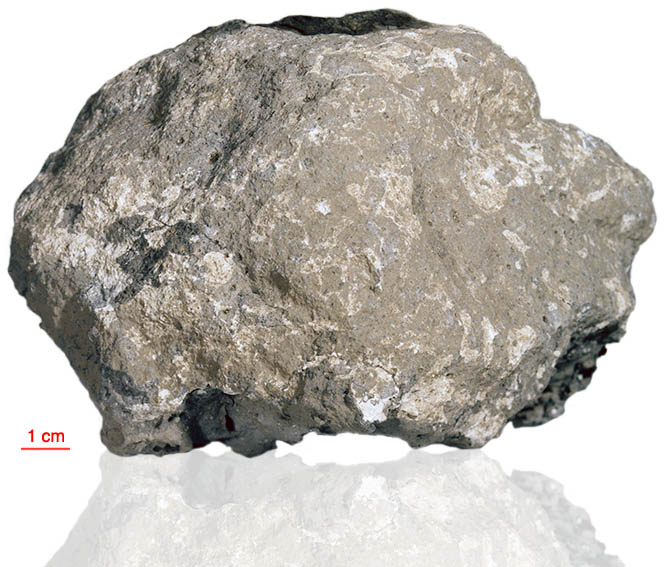
Fact sheet
61015 is one of the best examples of the Apollo 16 dimict breccias. These breccias consist of anorthositic material and impact melt rock with high aluminium content. It consists of roughly about 75% impact melt and 25% anorthosite lithologies. The impact melt (rotation 2) seems to have intruded the anorthosite lithology (rotation 1) and has recrystallized. The plagioclase in the anorthositic material is extremely fractured and deformed by impact processes. Plagioclase has patchy and undulatory extinction, contains healed shears, and locally contains patches of narrow shock-induced twin lamellae. Pyroxenes within the anorthosite show undulatory extinction and very locally augite contains shock-induced twinning. Most of the melt-rock has a fine-grained intersertal texture and largely consists of a mat of randomly oriented plagioclase laths, equant grains of olivine, sub-ophitically enclosing the plagioclase, and microcrystalline dark brown mesostasis filling the interstices. Included within this mat are rare large olivine grains, small pink spinels and globules of intergrown iron-schreibersite-troilite.
The sample weighed 1789 grams before analysis and has been dated at 3.90 ± 0.036 billion years (Ar/Ar).
Further details of this and other Apollo samples are here: http://curator.jsc.nasa.gov/lunar/
The Apollo 16 landing site was in the hilly region around Descartes crater in the lunar highlands. The landing spot was chosen to allow the astronauts to gather geologically older lunar material (Descartes Formation and the Cayley Formation) than the samples obtained in the first four landings, which were in or near lunar maria.
The mission lasted 11.1 days, with a stay on the lunar surface of 71 hours. The crew were on the lunar surface for 20.2 hours during which they traversed approximately 27 kilometers and collected approximately 96 kilograms of samples.
Apollo 16 was launched on 16 April 1972.






